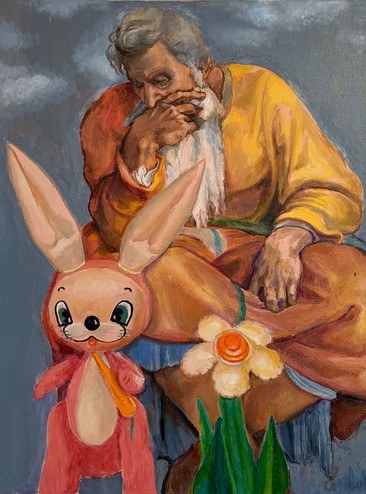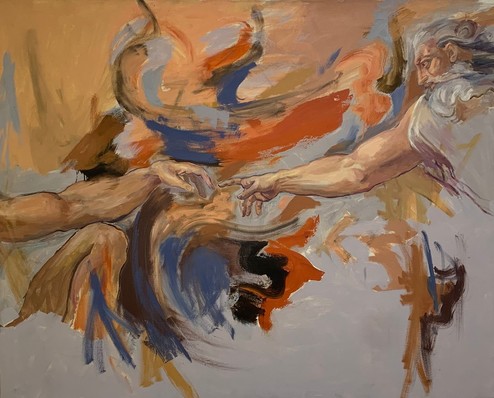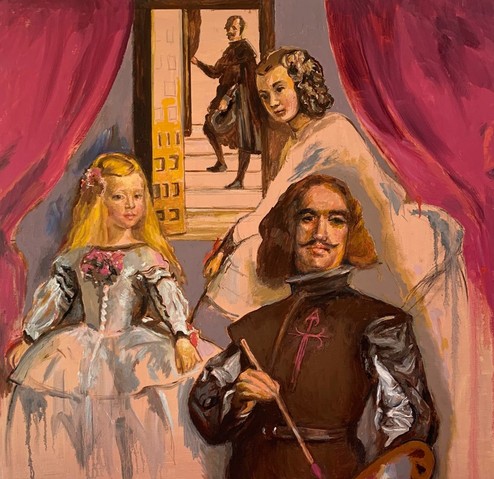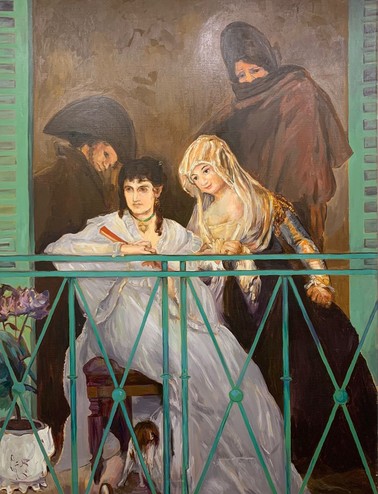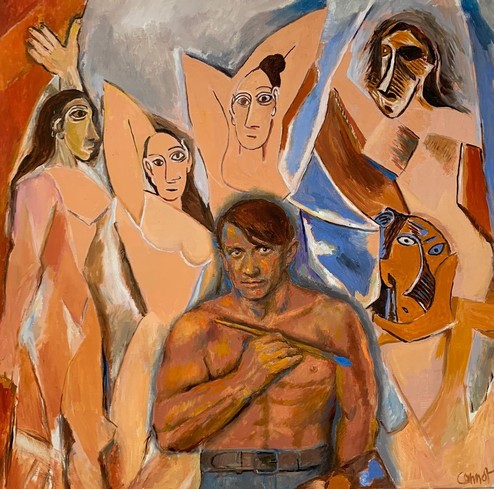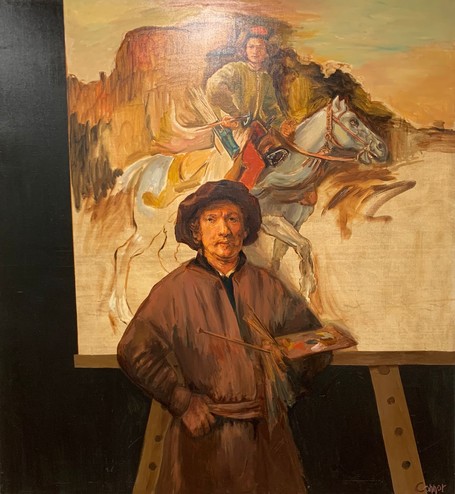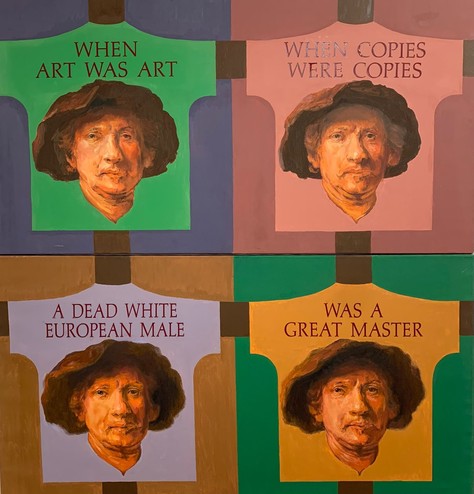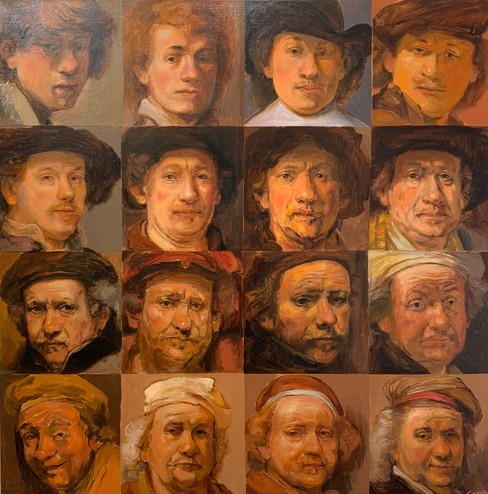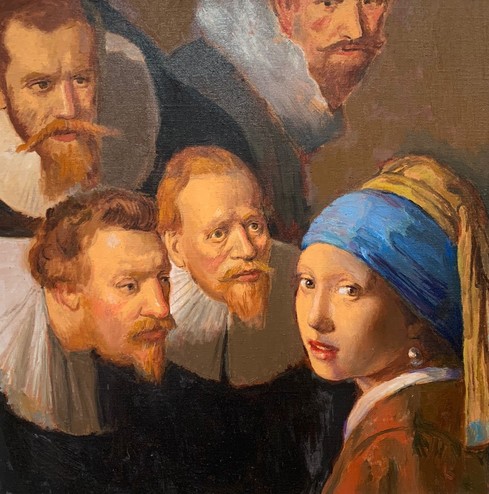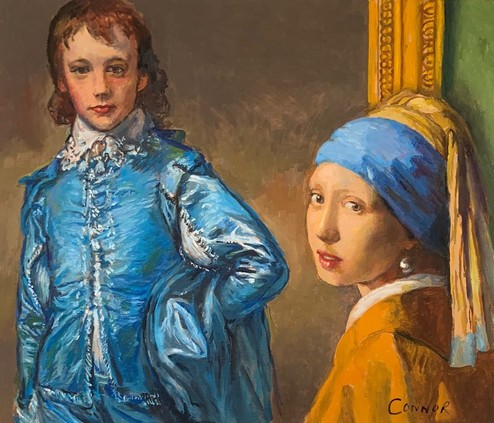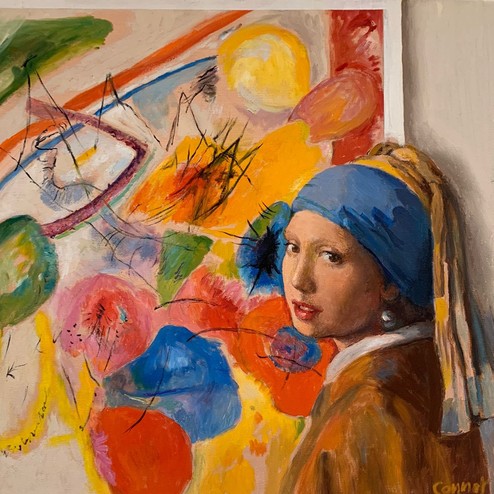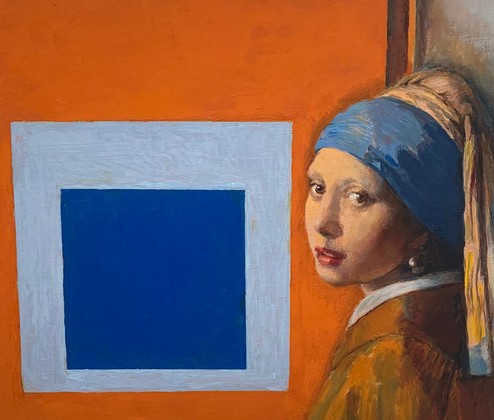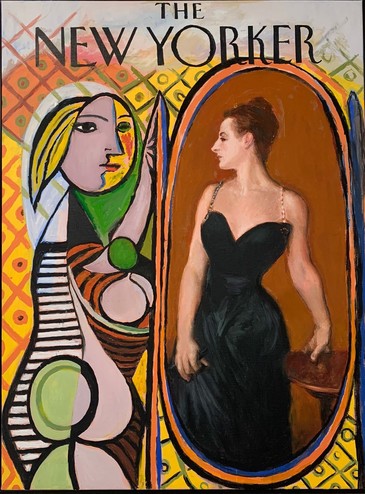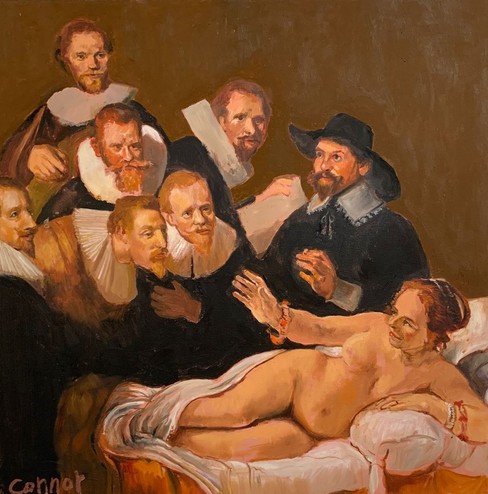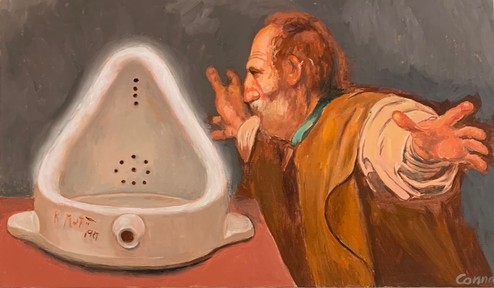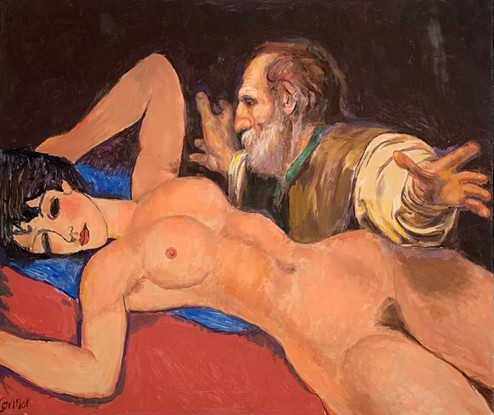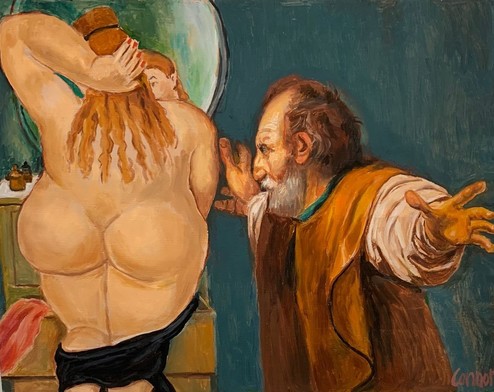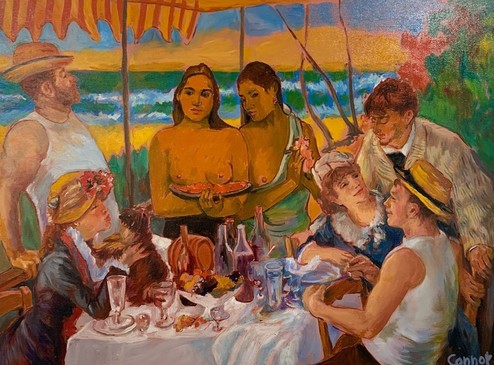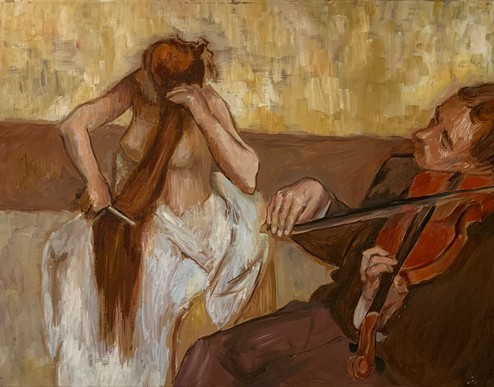Russell Connor: Creative Exchanges
"In His Own Words"
curated by:
Anita Shapolsky
The Anita Shapolsky Art Foundation is proud to present Creative Exchanges; the art of Russell Connor (1929-2019), In His Own Words, where the artist plays docent.
"The goals in my art are clear– to copy, and be original: to be serious, and make people smile. Less clear -- how an odd couple ---- museums and TV, inspired these goals.
In the sixties, I was a young abstract painter (ex-student of Josef Albers), taking on the job of TV Lecturer at the Museum of Fine Arts in Boston, writing and hosting a weekly half-hour program, Museum Open House, produced with WGBH. I was given remarkable freedom to choose my topics. We augmented the collection with reproductions of art from everywhere, and I enjoyed playing Instant Expert on the Art of The World, but the task of researching and writing scripts was daunting for someone not trained as an art historian. Painting gradually took a back seat, and I resigned after four years.
But I had found a new medium, promising to be a vital art form, and spent the seventies as a supporter and collaborator with video artists, such as Nam June Paik, Bill Viola, and William Wegman, at the same time producing films and TV programs on art.
Inevitably, I heard a voice asking, 'What about me?' Return to a lyrical, derivative abstraction was not possible. I began to copy the masters whose work I had been championing on TV. When I experimented with joining figures from two of them on the same canvas, I discovered a new composition, a new narrative, and an opening for the humor that had been missing from years of abstraction. The humor was never directed against the great artists I loved and enjoyed spending time with -- my new subject was the Imaginary Museum we all carry around, just a bit muddled by the explosion of art images on everything since WWII, from posters to placemats. I don’t pretend to replicate genius – the ideal viewing distance for my work is 3,000 miles from the originals.
The 'seamless' mixing was influenced by a video masking technique, much loved by video artists, called Chroma Key, now evolved into the 'green screen' process that makes possible many of Hollywood’s and TV’s spectacular effects. Drop out Manet and drop in Picasso--I like to think Magritte would understand."1
"The paintings in this book [exhibition] can stand on their own, but that would be a pity. Art should engender conversation, and I enjoy talking and writing about Masters in Pieces. ... Robert Motherwell said, 'Every intelligent painter carries the whole culture of modern painting in his head. It is his real subject, of which everything he paints is both an homage and a critique.' In the following notes, I try to make clear how these paintings grew out of experience, out of a life happily haunted by art history. Great artists have been my heroes, my teachers, my monsters, and my landscape. I hope you enjoy a tour of my fantasy museum."2
1. Artist's statement
2. Connor, R. (2016), Masters in Pieces II. Pleasure Boat Studio
